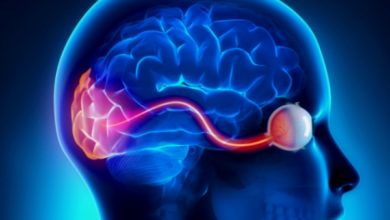Paraganglioma - causes, symptoms, treatment
The content of the article
The latter consist of chromaffin cells and non-chromaffin cells. The first include the sympathetic nodes, the substance of the adrenal glands, and the Zuckerkandl organ. Non-chromaffin paraganglia are located mainly in the extremities, along the blood flow through soft tissue vessels. There are also bone marrow, orbital and pulmonary paraganglia. Both types are granular cell tumors. Most often found in patients over 45 years of age. The boundaries of the nodes are blurred, which is associated with the ability to penetrate into neighboring tissues. On palpation they are soft, friable, often bleeding. More than 90% of paragangliomas are benign. About 5% of malignant ones are sympathetic variants.
Causes
The causes of paraganglioma have not been fully studied. The main feature is autosomal dominant heredity. The provoking pathogenic factors are the following:
- Prolonged chronic diseases (have not reached the stage of compensation);
- Long-term or uncontrolled use of steroid and hormonal drugs;
- Frequent infections;
- Weakened immune system.
Symptoms
The pronounced signs of the clinical picture directly depend on the site of the neoplasm. General signs of the disease:
- Headaches (coordination disorders);
- Deterioration of vision, hearing;
- Nausea, vomiting;
- Attacks of shortness of breath;
- Tachycardia or bradycardia;
- Intensity (pallor) of the skin;
- Blood pressure surges;
- Change in body weight;
- Noticeable tremor of the limbs.
Diagnostics
Diagnosing this disease is quite difficult. It is characterized by a slow course and asymptomatic development. Prolonged inactivity leads to a blurry overall picture. For reliable verification, a complete diagnostic program is required using instrumental and laboratory methods:
- Blood tests;
- Testing for tumor markers;
- Histological analysis of the tumor sample;
- Ophthalmoscopy;
- Ultrasound;
- Tomogram.
Treatment
Based on the medical history, taking into account the clinical picture, course and diagnostic data, the attending physician selects an individual treatment method:
- Surgical treatment. A fairly common option for getting rid of paraganglioma. Resection is carried out after blocking the blood supply.
- In exceptional cases, if surgical removal is not possible, treatment is carried out using radiation therapy. Radiation therapy can be either an adjunct to subtotal resection or the only option for elderly inoperable patients.
- The radio wave treatment method is minimally invasive and is the most optimal option. Does not require long recovery. For large formations, in order to avoid postoperative complications, treatment can be carried out in two stages.
Thus, paraganglioma is a benign formation and the rehabilitation prognosis is quite favorable. With complete and timely removal of the tumor, the patient recovers completely. A systematic medical examination to diagnose the disease at an early stage can be a preventive measure.
Please rate the article:



